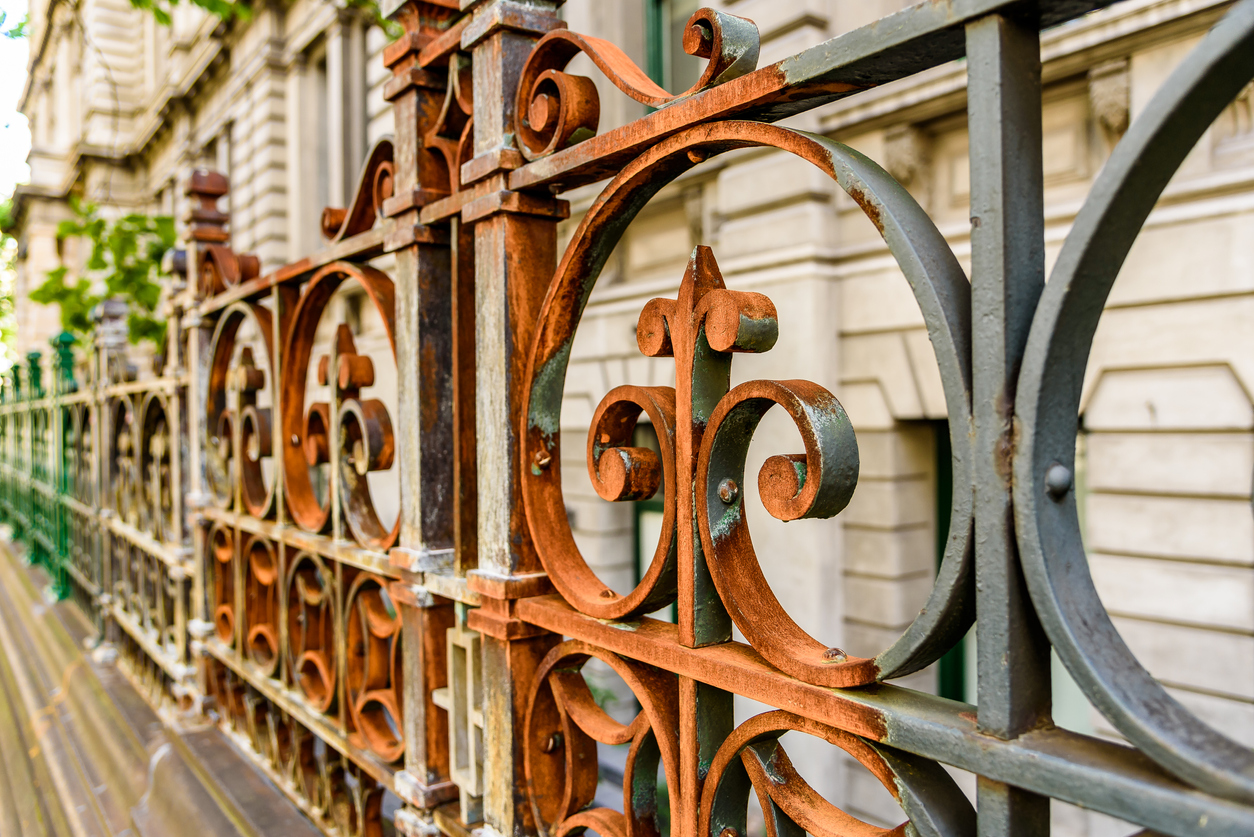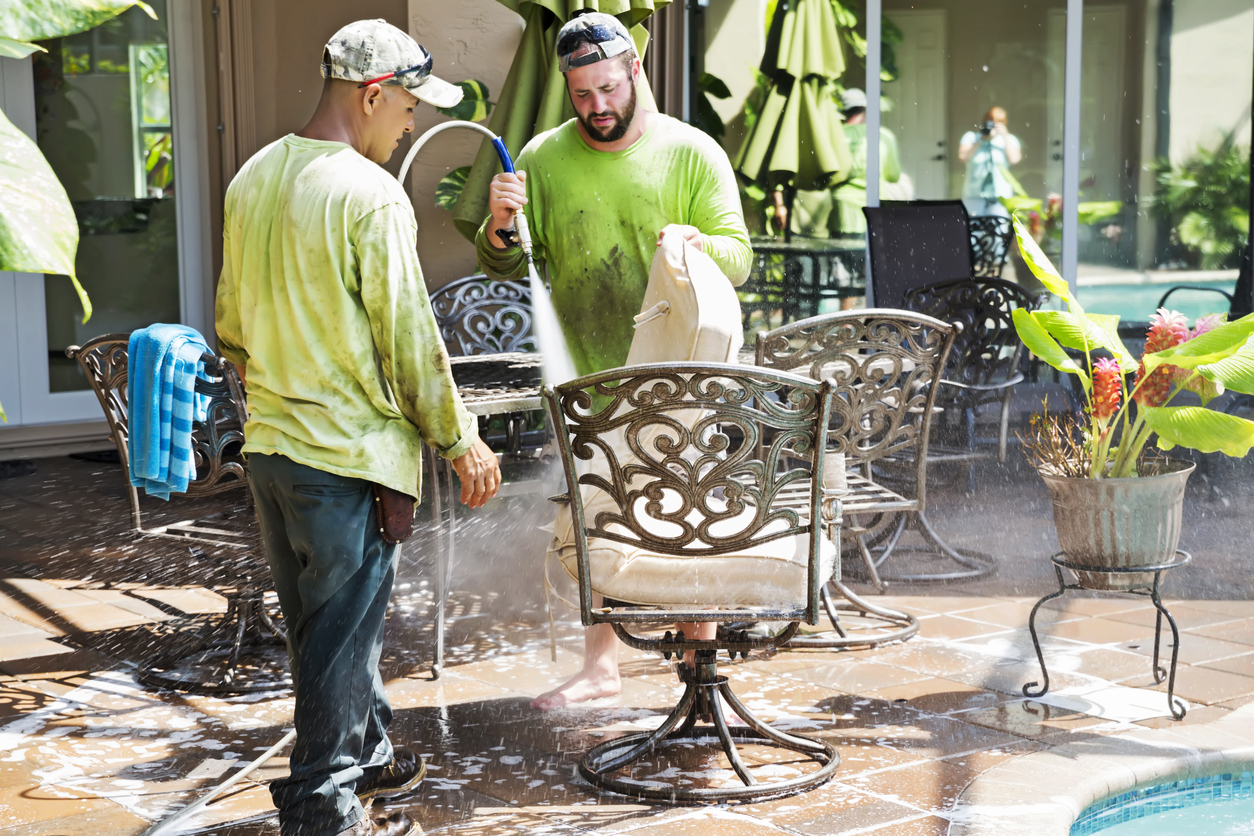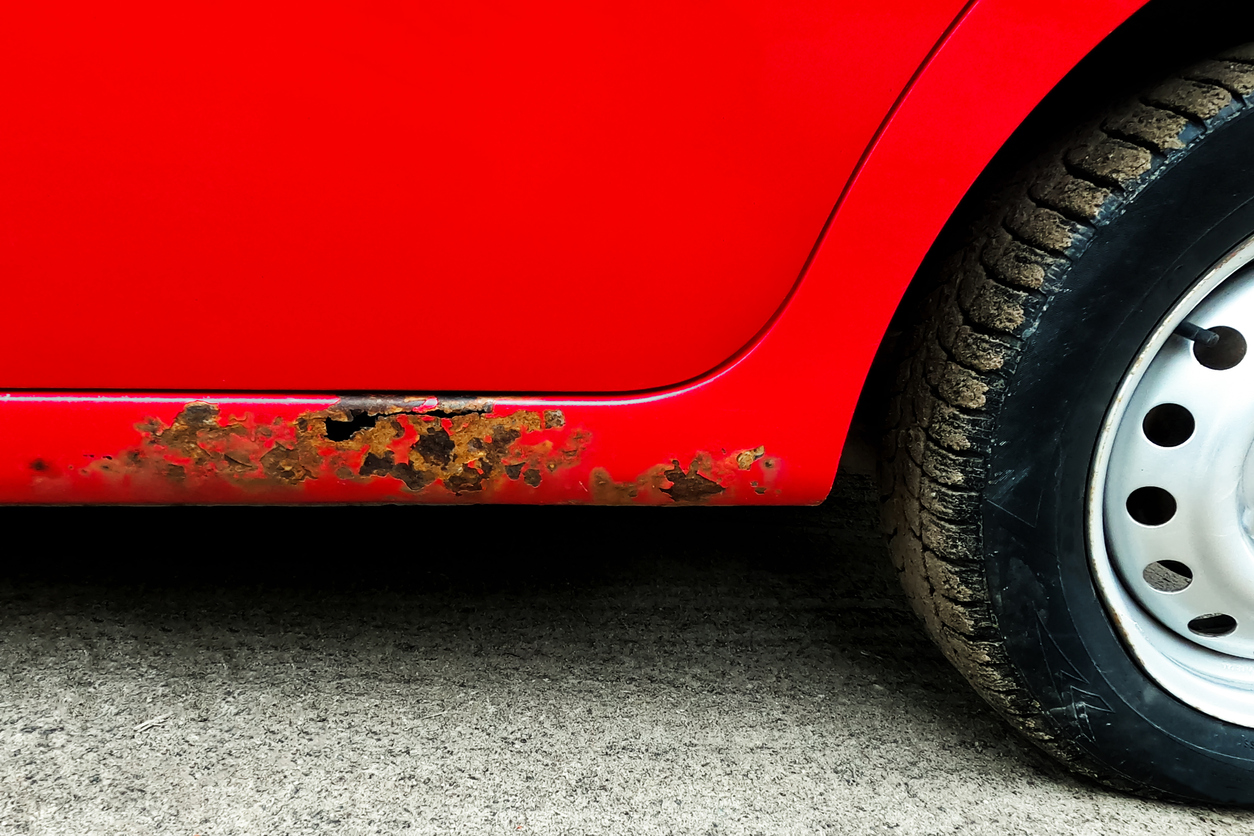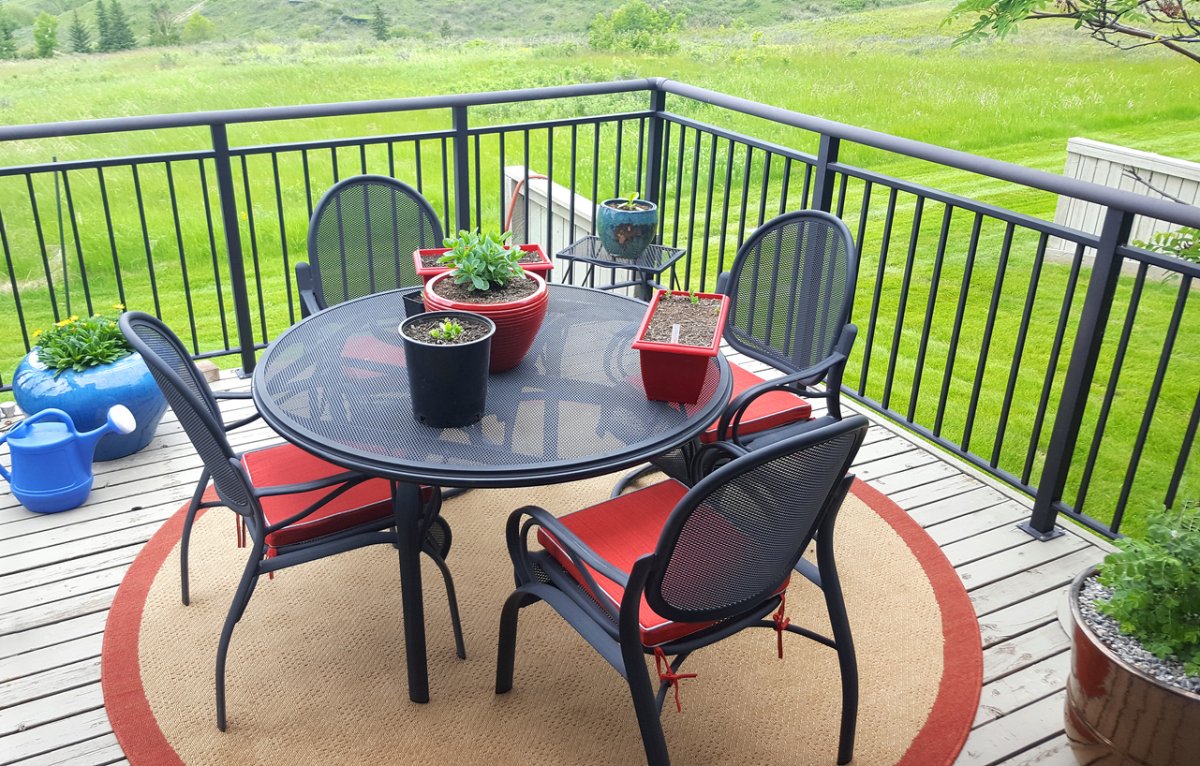We may earn revenue from the products available on this page and participate in affiliate programs. Learn More ›
Enter the yard of many homes in America and somewhere among the trees, shrubs, and grass, you’re bound to find metal. Patio furniture, barbecue grills, handrails, fences, and gates—these are only some of the metal features common to the spaces outside our front doors. Thanks to metal’s well-deserved reputation for durability, we don’t often think about the material’s maintenance requirements. But when it comes to preventing rust—the mortal enemy of metal—homeowners must intervene from time to time to ensure that their outdoor metals keep looking and performing their very best. Follow these simple guidelines to help iron, steel, and other metals enjoy the longest life possible.
Corrosive and Anti-Corrosive Metals
Since iron is a key ingredient for rust, only metals that contain iron such as cast iron and steel are corrosive. Technically copper can corrode, but that process does not harm the metal.
Rust occurs when iron reacts with oxygen in the air and water to create a compound called iron oxide. Like iron, copper also reacts to water and air, causing a chemical reaction that forms a green patina on the outside of the metal. In fact, it’s the copper content that’s in sterling silver that causes it to tarnish and in brass that causes it to turn green.
Though the reactions are similar, the effects on the metal are quite different. While rust is destructive, weakening and ultimately destroying the metal, the green patina that forms on copper serves as a shield that protects the metal underneath it from the elements.
Corrosive Metals
Corrosive metals are those that easily lose electrons combined with an element that absorbs them. For example, iron easily loses electrons to oxygen when both come into contact with water, creating rust.
- Iron
- Steel
Anti-Corrosive Metals
One way of preventing your grills, siding, fencing, and gates from rusting is to select products that use metals that are corrosion-proof.
- Stainless steel: Stainless steel is an alloy of elements that include mainly iron and at least 18 percent chromium. While the iron in the alloy is susceptible to rust, the chromium creates a protective layer around the metal surface that resists corrosion while preventing oxygen and water from reaching the iron underneath it.
- Aluminum: Aluminum is a popular material of choice for automobiles not only because it’s lightweight but also because it resists corrosion. Aluminum, which is an alloy, contains very little iron, which is a key ingredient for producing rust. When aluminum is exposed to water it creates a film of aluminum oxide over the metal that protects the metal beneath it from corrosion.
- Galvanized steel: Galvanized steel consists of carbon steel with a thin layer of zinc on top of it. The zinc coating protects the steel by preventing water and oxygen from reaching it. However, the protection is usually only temporary. The zinc layer eventually wears off, causing the steel below to eventually rust.
- Copper or brass: Not all corrosion is bad. While rust will destroy iron, it actually helps preserve copper. Copper turns bright green when it comes into contact with water, oxygen, and carbon dioxide, a process that takes years. That green patina protects the copper below it from further corrosion, which is why copper is a good (albeit expensive) option for plumbing and gutters and why it’s sometimes found in the roofing of older buildings.

How to Protect Metal From Rusting
While choosing anti-corrosive metals is one way to avoid rust, that strategy isn’t always an option. There’s a reason we have the Man of Steel and Iron Man and no superheroes named Aluminum Man or Copper Man: iron and steel are much stronger metals. After using a homemade rust remover, try one of the methods below.
1. Choose coated metals.
Once precipitation and harsh weather have conspired to compromise and chip away at the coating on metal, then it’s only a matter of time before rust makes an appearance. Choosing your metals wisely is the best prevention. You’ll get the greatest longevity from products that have baked-on enamel or powder-coated surfaces. In comparison to less expensive painted or varnished metal, these coated products are far less vulnerable to peeling and flaking. Although they’re more expensive initially, metal items with superior coatings are worth the cost in the long run because they truly last for years. Another option is to paint your metal items with an outdoor paint designed for metal.
2. Galvanize the metal.
One way to protect steel and iron from rust is to coat it with a metal that resists rust: zinc. Galvanized nails and sheet metal you find at the home improvement store are coated with molten zinc, making them suitable for outdoor use. These products are made by dipping steel in molten zinc. While most DIYers don’t have the means to heat zinc to the 800 degrees required to melt it, there is an easier method.
Cold galvanizing compounds come in aerosol spray cans and are available at most home improvement stores. While they may not be as durable as hot galvanized metal, it’s a good option for protecting steel or iron metal structures that don’t see a lot of handling, such as a fence.
3. Use a bluing technique.
One option for protecting steel from rust is to use a technique known as bluing, a process commonly used among gun owners as a corrosion preventative. This process oxidizes the surface of the steel, creating a protecting layer that prevents rust from forming on it.
The most common methods are cold bluing and hot bluing. Hot bluing is a complicated method that requires one to heat the metal in a mix of chemicals. Cold bluing is much easier and involves the use of a premixed bluing solution that is rubbed on the metal to create the coating. This method is ideal for protecting smaller items, such as tools and cutlery, and will work with any iron metal or alloy with the exception of stainless steel. Just keep in mind that, per its name, bluing does change the color of the metal by leaving a distinctive blue patina.

4. Safeguard your metal furniture by keeping it clean and well maintained.
Metal outdoor furniture has its particular challenges. To make your furniture last, get in the habit of keeping up these easy routines:
- What a difference cleanliness makes! At least twice each year, give your metal tables and chairs a thorough once-over. Using a rust remover mixture of warm water and liquid detergent ought to do the trick. Apply the solution with a sponge; grab an old toothbrush to scrub any hard-to-reach areas. Use a hose to rinse away all traces of the detergent, then dry the metal with a rag; on a warm day, leave it to air-dry in the sun.
- Take pains to avoid damaging the metal’s coating. A simple action like clinking two metal surfaces together can chip one or both pieces, and dragging a chair or table leg may result in scrapes that leave the furniture vulnerable to rust. Take precautions. Raise the furniture up from the ground when you’re moving it, and at the end of the season, when you’re storing away your furniture, use old towels to prevent the pieces from hitting each other.
Also, if you live somewhere with monsoon summers, harsh winters, or other types of severe weather, consider bringing your outdoor metal furniture indoors, whether it’s for short-term shelter whenever a violent storm threatens, or for a season-long hibernation when the temperatures drop. No storage space in your basement, crawl space, or shed? A reasonable alternative is to cover the furniture with a breathable fabric for the duration of the foul weather.
5. Make repairs as soon as you detect rust.
Despite your best efforts, the metal on your property may begin to show signs of wear. Don’t wait for a small problem to get more serious. When you come across a small patch of rust, thoroughly clean the area (as described above), except work fine-grit sandpaper into the procedure. Lightly sand the rust away, then wipe off all residual grit before touching up the surface. Use metal primer first; once it has dried completely, follow up with a paint that’s specially formulated for metal.
6. If necessary, strip the metal and refinish it entirely.
More extensive damage to metal demands more time and effort, and it may require refinishing the metal. Here, preparation is key. Before you can begin a refinishing project, you’ve got to get down to bare metal. This is much easier said than done. Use a wire brush—or to make quicker, easier work of it, use the wire wheel attachment on your power drill—and scrape away the old coating. Pay special attention to any crevices or scrolls that may be part of the design. Once you’re done scraping, wipe down the metal with a damp cloth (or hose it off), then wait for everything to dry before you apply metal primer and metal paint.

FAQs About Preventing Rust
If you still have questions about rustproofing, read on for answers to a few commonly asked questions about this topic.
Q. What can I spray under my car to prevent rust?
The best way to prevent rust from forming on the undercarriage of a car is to use an undercoating spray. These products come in easy-to-apply spray cans and protect the undercoating of a car from rocks, salt, moisture, and other substances that can corrode metal.
Q. Does oil stop rust?
As the Tin Man would attest oil does stop rust, but only temporarily. Oil creates a film that prevents oxygen and moisture from coming into contact with the metal to create rust. Keep in mind that oil coatings will wear off fairly quickly, so oil must be reapplied regularly to keep rust from forming.
Q. How long does rust proofing last?
A good rust proofing should last several years depending on the severity of the weather to which the metal item has been exposed. A good rule of thumb is to check a rustproofing job once a year and spot treat any areas that show signs of corrosion.
Q. Is rusted metal weaker?
Rusted metal is significantly weaker than rust-free metal. When rust forms, it causes the metal to become flaky and brittle, weakening it to a point that it can be broken apart with your fingers.
Final Thoughts
Discovering rust on patio furniture, a grill, or the underside of one’s car can be alarming. If left unchecked, rust can quickly eat through these items and destroy them. Luckily, there are ways to keep rust and corrosion at bay. If you’re shopping for outdoor furniture or fencing, consider purchasing items made with materials that are corrosion-free. If that’s not possible (or you’re trying to protect an item that is showing signs of rust), consider using one of the above strategies to protect it before it’s too late.


